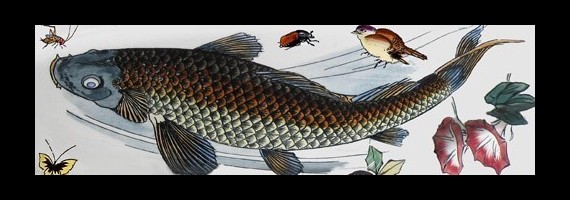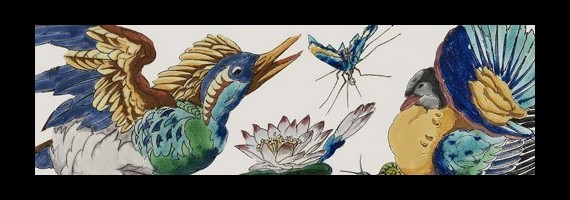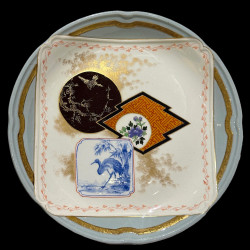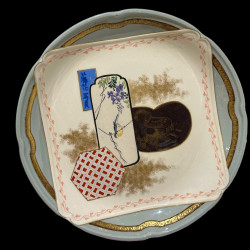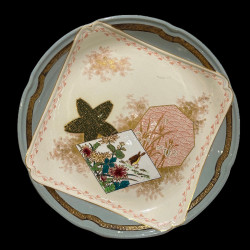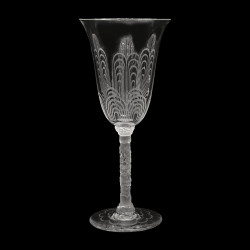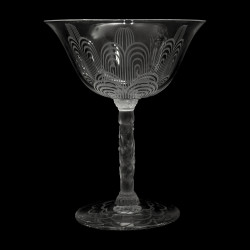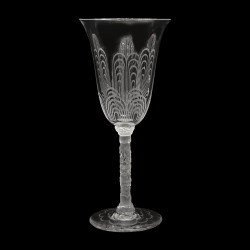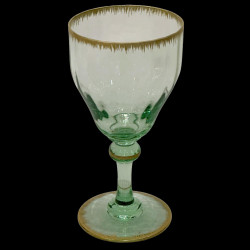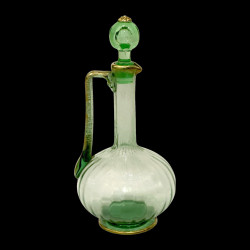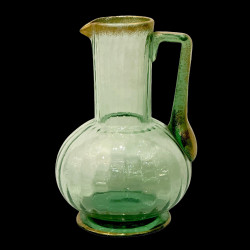Search
Categories
- OUR COLLECTIONS
- Decorative tin plates
- Dinnerware
- Table accessories
- Crystal, Glass
- Melamine, rattan, tray
- Flatware
- Decorations & Christmas
- OTHER COLLECTIONS
- ANTIQUES
- WHAT'S NEW
- GIFTS IDEAS
- WEDDING LIST
- SPECIAL OFFERS
Museum pieces
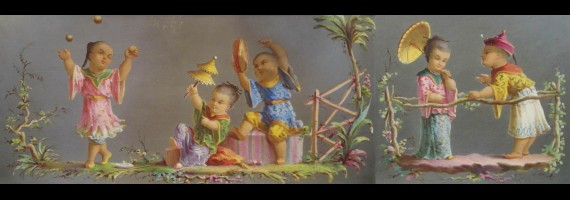
Some rares pieces exhibited in Universelles Exhibitions... famous Vieillard Bordeaux services called "Grands Oiseaux" or "Japoneses Scènes, original set artist like Amédée de Caranza, incredible Bracquemond service edited by Rousseau all present in the best and world famous such as Victoria Albert museum, Orsay museum, Paris Arts Décoratifs museum, Métropolitan museum, Tokio Art Occidental museum, that brings you to dream...please come and discover them.
Bracquemond Creil & Montereau
As soon as it was exibited at French internationnal fair in 1867, this service was the most successful In 1866, wishing to embrace the revival of ceramics decorated by transfer printing, Eugène Rousseau sought the collaboration of the painter and engraver Félix Bracquemond. Bracquemond found inspiration for his animal and plant motifs (around 280), in Hokusai’s Manga (1815), Hiroshige’s Grand Series of Fishes (1830) and Taito’s Flower and Bird Paintings (1848), for his innovative, asymetric designs on plates featuring one primary image and two, usually smaller, supplementary images. From its first presentation at the 1867 Universal Exhibition in Paris, the dinner service was very successful and remained so. It was continued by Rousseau’s successors and produced by the manufacturers Creil & Montereau under successive company names, right up to 1938.
Grands Oiseaux Vieillard
A stunning dessert plate from the "Kioto" collection by the renowned Creil et Montereau manufacturer, dating back to 1878-1884. This fine earthenware piece, typical of the japonisme trend that swept through Europe in the late 19th century, features a refined design combining printing and underglaze painting, with gold highlights adding a luxurious touch.
875,00 €In StockA stunning dessert plate from the "Kioto" collection by the renowned Creil et Montereau manufacturer, dating back to 1878-1884. This fine earthenware piece, typical of the japonisme trend that swept through Europe in the late 19th century, features a refined design combining printing and underglaze painting, with gold highlights adding a luxurious touch.
875,00 €In StockA stunning dessert plate from the "Kioto" collection by the renowned Creil et Montereau manufacturer, dating back to 1878-1884. This fine earthenware piece, typical of the japonisme trend that swept through Europe in the late 19th century, features a refined design combining printing and underglaze painting, with gold highlights adding a luxurious touch.
875,00 €In StockA stunning dessert plate from the "Kioto" collection by the renowned Creil et Montereau manufacturer, dating back to 1878-1884. This fine earthenware piece, typical of the japonisme trend that swept through Europe in the late 19th century, features a refined design combining printing and underglaze painting, with gold highlights adding a luxurious touch.
875,00 €In StockRed wine glass in Baccarat crystal from the Jets d’Eau service, designed by Georges Chevalier for the 1925 International Exhibition in Paris. Crystal glasses featuring engraved stylized water jets, reflecting the Art Deco era. Frosted crystal stem adorned with a delicate floral motif, and a base evoking rippling waves in motion.
665,00 €In StockWine glass in Baccarat crystal from the Jets d’Eau service, designed by Georges Chevalier for the 1925 International Exhibition in Paris. Crystal glasses featuring engraved stylized water jets, reflecting the Art Deco era. Frosted crystal stem adorned with a delicate floral motif, and a base evoking rippling waves in motion.
565,00 €In StockChampagne glass in Baccarat crystal from the Jets d’Eau service, designed by Georges Chevalier for the 1925 International Exhibition in Paris. Crystal glasses featuring engraved stylized water jets, reflecting the Art Deco era. Frosted crystal stem adorned with a delicate floral motif, and a base evoking rippling waves in motion.
665,00 €In StockWhite wine glass in Baccarat crystal from the Jets d’Eau service, designed by Georges Chevalier for the 1925 International Exhibition in Paris. Crystal glasses featuring engraved stylized water jets, reflecting the Art Deco era. Frosted crystal stem adorned with a delicate floral motif, and a base evoking rippling waves in motion.
620,00 €In StockThis emerald green-tinted blown glass wine glass exemplifies the exceptional craftsmanship of the Daum manufactory in Nancy around 1900. Its ribbed design lends a subtly animated texture, while delicate gold highlights - applied using the combed decoration technique - gracefully accent the rim and base.
235,00 €In StockThis emerald green-tinted blown glass wine glass exemplifies the exceptional craftsmanship of the Daum manufactory in Nancy around 1900. Its ribbed design lends a subtly animated texture, while delicate gold highlights - applied using the combed decoration technique - gracefully accent the rim and base.
195,00 €In StockThis emerald green-tinted blown glass wine glass exemplifies the exceptional craftsmanship of the Daum manufactory in Nancy around 1900. Its ribbed design lends a subtly animated texture, while delicate gold highlights - applied using the combed decoration technique - gracefully accent the rim and base.
165,00 €In StockThis emerald green-tinted blown glass champagne glass exemplifies the exceptional craftsmanship of the Daum manufactory in Nancy around 1900. Its ribbed design lends a subtly animated texture, while delicate gold highlights - applied using the combed decoration technique - gracefully accent the rim and base.
220,00 €In StockThis emerald green-tinted blown glass wine decanter reflects the exceptional savoir-faire of the Daum manufactory in Nancy around 1900. Its subtly ribbed body adds a dynamic texture, while the elegant gold accents—applied using the sophisticated combed decoration technique—highlight the rim, base, and stopper with refined precision.
380,00 €In StockThis emerald green-tinted blown glass water pitcher showcases the exceptional artistry of the Daum manufactory in Nancy, circa 1900. The subtly fluted body adds a sense of movement and texture, while elegant gold highlights accentuate the contours of the rim and base with exquisite finesse.
575,00 €In Stock

